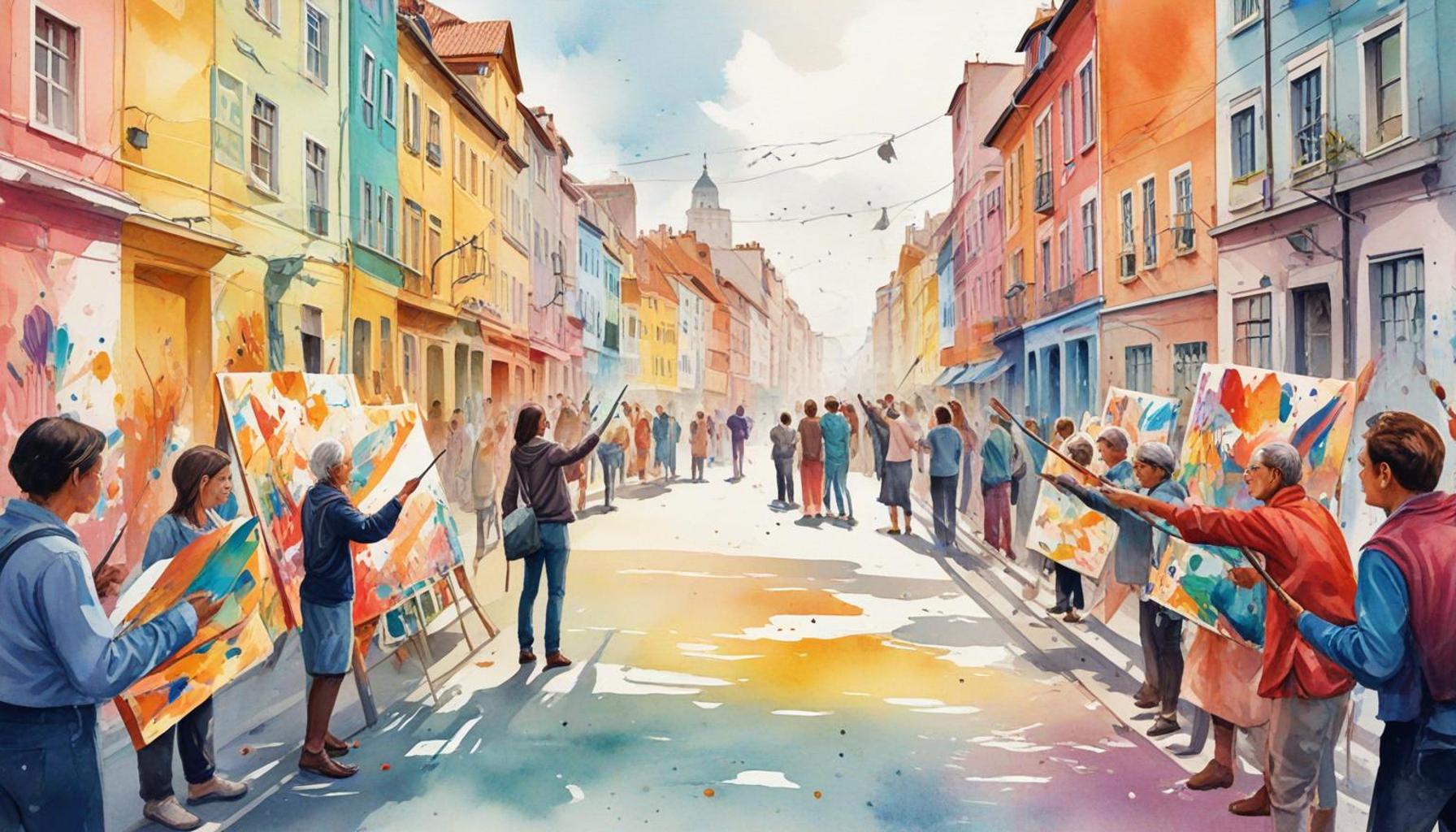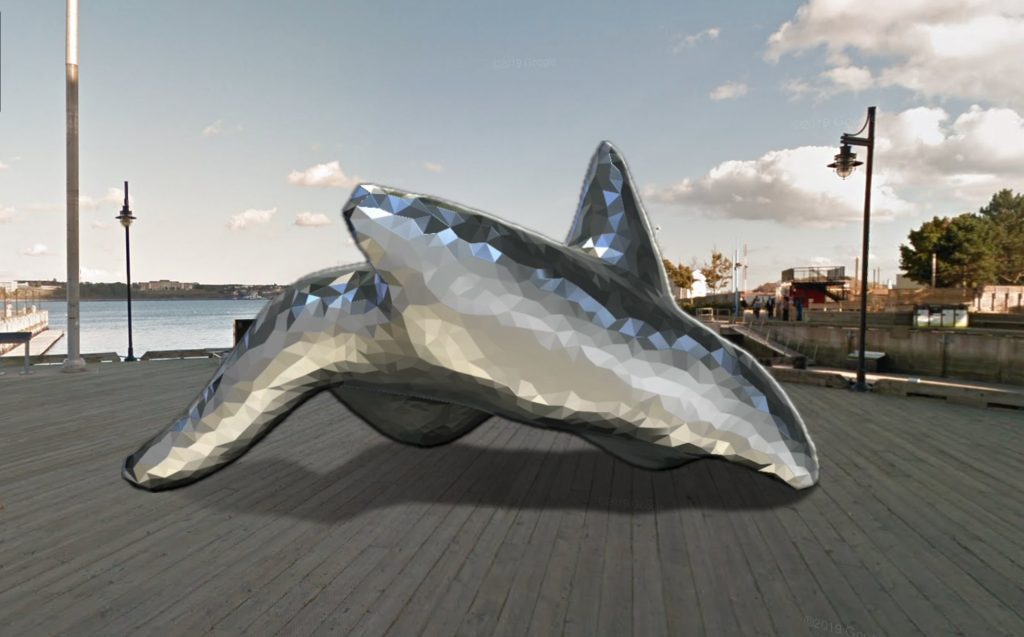Collective Painting: Uniting Generations and Cultures in Public Artistic Projects

Bridging Communities Through Collective Art Projects
Public artistic endeavors, particularly through the medium of collective painting, hold an extraordinary potential to weave together individuals from various backgrounds, cultures, and age groups. These projects not only enhance the visual landscape of neighborhoods but also create an inclusive space where voices can unite in creativity, fostering understanding amongst diverse communities. By prompting participation from all demographics, collective painting helps nurture a shared identity and collective memory.
The richness of collective painting initiatives is evident in their defining features:
- Community Engagement: Initiatives are typically formed around a communal theme that resonates with local residents. This engagement encourages participants to bring their individual skills and artistry to the canvas, transforming public spaces into collaborative expressions of community pride.
- Cultural Exchange: Artists participating in these projects often come from distinct cultural backgrounds, each contributing stories and techniques reflective of their traditions. The blending of these varied experiences can lead to art that represents the multicultural essence of the neighborhood.
- Intergenerational Collaboration: Working side by side, artists of different ages infuse new life into traditional art forms. Such collaborations foster mutual respect and learning, as younger artists might introduce contemporary styles while older generations offer foundational techniques and historical context.
Noteworthy examples abound in major cities across the U.S. The Wall of Hope in New York City highlights stories of resilience and unity, addressing issues such as social justice and community healing through its vast mural work. Similarly, the Paint the Streets initiative in Los Angeles amalgamates local artists’ visions to create eclectic street art that reflects the socio-political narratives of the areas where they’re painted. These artistic projects serve as both visual landmarks and as powerful storytelling platforms.
The breadth of impact that collective painting projects yield extends well beyond the ornamental. They serve as catalysts for dialogue, fostering acceptance and cooperation among individuals who might have previously remained disengaged. By engaging in the act of art-making together, participants often develop a deeper appreciation for each other’s stories and backgrounds—a vital process in today’s increasingly polarized society.
As we delve into the realm of collective painting, we uncover a powerful medium for transcending barriers and igniting connections among individuals and communities alike. Through the lens of art, we can envision a world where unity amidst diversity is celebrated, proving that creativity knows no bounds and can, indeed, bridge generations and cultures.

DISCOVER MORE: Click here to learn about the impact of community art
Exploring the Impact of Collective Painting Initiatives
Collective painting projects serve as vital instruments of change in communities across the United States, effectively bringing together diverse voices while challenging the conventional boundaries of artistic expression. This movement transcends mere aesthetics; it embodies a spirit of collaboration that allows participants to explore their identities and examine the shared narratives of their neighborhoods. The significance of collective painting lies in its ability to create environments where individuals can collaboratively manifest their thoughts, emotions, and experiences on public canvases, leading to a deeper connection amongst participants.
At the heart of these projects is an ethos centered on inclusivity and participation. Here are some of the key elements that define the transformative power of collective painting:
- Public Participation: Collective painting initiatives are often designed to be accessible to community members of all ages and backgrounds. Local workshops, art classes, and collaborative practices encourage individuals to express themselves, fostering a sense of belonging and ownership in their creative endeavors.
- Empowerment through Expression: These projects empower participants to share their unique perspectives, turning personal stories into public art. As individuals contribute their own ideas and styles onto a communal canvas, they assert their identity and validate their experiences, ultimately creating a richer narrative tapestry.
- Art as a Reflection of Society: Collective art can act as a mirror, reflecting the social dynamics, challenges, and triumphs of a community. Artists often use their murals to address pressing issues such as poverty, discrimination, and environmental awareness, inviting dialogue and prompting critical reflection among viewers.
In cities like Seattle, the Seattle Mural Program emphasizes these principles by offering grants to artists who aim to create murals that reflect community values. Each mural, often co-created with community members, serves as a testament to the aspirations and struggles of the local population. Similarly, the Community Art Program in San Francisco integrates diverse artistic voices, producing murals that celebrate cultural heritage while also inviting cross-cultural collaborations.
The influence of collective painting initiatives extends well beyond the art itself. They serve as vital pathways for community healing and connection, especially in regions grappling with social and economic hardships. As individuals from varying backgrounds converge to lend their brushstrokes, they forge a collective identity imbued with empathy and understanding. This collaborative spirit plays a crucial role in bridging divides, making room for mutual respect and fostering a healthy dialogue across generational and cultural gaps.
As we explore the multifaceted aspects of collective painting, it becomes clear that these projects have the power to reshape community dynamics. Through collaborative artistry, participants not only create stunning visual displays but also cultivate a profound sense of togetherness and a shared passion for their cultural narratives.
| Advantage | Details |
|---|---|
| Community Engagement | Collective painting projects foster active participation from diverse community members, breaking down barriers and creating a sense of shared ownership. |
| Cultural Expression | These artistic endeavors allow for the representation of various cultures, ensuring that the narratives of different generational backgrounds are told and celebrated through visual art. |
In public spaces, the influence of collective painting transcends mere aesthetics. It serves as a catalyst for community cohesion, inviting individuals of different ages and cultural backgrounds to come together and collaborate creatively. This approach not only enhances public spaces but also enriches the social fabric of the community, establishing unbreakable ties among participants.Furthermore, the act of painting collectively provides a platform for storytelling. Artists and non-artists alike weave together personal and cultural histories, transforming walls into canvases that reflect the community’s identity. Through visual narratives, these projects not only document local heritage but also advocate for social change and awareness of pressing issues, ultimately uniting generations in the shared experience of artistic expression. By participating in these projects, individuals find their voices amid a collaborative tapestry of ideas, promoting understanding and empathy across demographics.
DIVE DEEPER: Click here to explore the impact of community art
The Role of Technology in Expanding Collective Painting Horizons
As collective painting initiatives gain momentum, technology emerges as a powerful ally, revolutionizing how artists and communities collaborate. The intersection of art and digital tools has opened new avenues for participation, allowing individuals who may have traditionally felt marginalized or disconnected from the arts to engage in meaningful ways. This digital transformation not only enhances the artistic experience but also fosters a greater sense of community across diverse groups.
One significant advancement is the rise of virtual collaboration platforms. These technologies enable artists and community members to co-create regardless of geographical limitations. For example, several initiatives have embraced online workshops where participants can use digital canvases to sketch, paint, or brainstorm ideas. Projects such as the Global Art Project leverage these platforms to gather contributions from artists worldwide, resulting in murals that reflect a mosaic of cultures and ideas, ultimately transforming how communities perceive their shared identity.
Furthermore, social media has played a pivotal role in amplifying the voices of participants in collective painting projects. Platforms like Instagram and Facebook allow artists to document their progress in real-time, engage with their audience, and invite feedback. This social involvement turns creators into influencers, drawing more participants into the fold and inspiring others to take part in similar projects. By making the process visible, these platforms foster an environment of transparency and community-building, essential elements in the heart of collective painting.
In addition to facilitating creative collaboration, innovative technologies also contribute to the preservation and enhancement of cultural heritage. Augmented reality (AR) applications, for instance, can breathe life into murals by overlaying digital content that tells the stories behind the pieces. This fusion of traditional art with modern technology not only educates viewers about the cultural significance of the artworks but also embellishes the communal experience, engaging audiences on multiple sensory levels.
Collective painting initiatives also provide a valuable opportunity for intergenerational dialogue, as participants from older and younger generations come together to share their experiences and artistic techniques. Organizations like Generations United have been instrumental in creating programs that merge painting workshops with discussions on legacy and identity, encouraging the wisdom of elders to intermingle with the fresh perspectives of youth. This dynamic exchange empowers participants to understand and appreciate their cultural roots while also imagining their artistic visions for the future.
Emergent research indicates that collective painting can have long-lasting societal impacts. A recent study by the National Endowment for the Arts highlighted that communities engaged in public art projects report increased social engagement and decreased crime rates, underlining how collaborative art-making fosters not just individual expression, but collective responsibility. By nurturing a sense of community pride and ownership, these projects become catalysts for positive change.
Through the incorporation of technology, the development of intergenerational exchanges, and the potential for broader societal impact, collective painting initiatives are redefining what it means to create art within a community. They invite participants to not only embrace their uniqueness but to contribute to a collaborative legacy that speaks to both the past and the present, ensuring that the canvas of societal narrative remains vibrant and inclusive.
DISCOVER MORE: Click here to dive into the evolution of art
Conclusion: The Lasting Impact of Collective Painting
In essence, collective painting stands as a testament to the power of art in uniting diverse generations and cultures through public projects. By creating spaces for collaborative expression, these initiatives foster a sense of community that transcends geographic and cultural boundaries. The integration of technology, including virtual collaboration platforms and social media, has only amplified this effect, allowing artistic voices to converge in ways that were previously unimaginable.
Moreover, the intergenerational dialogue cultivated through these painting efforts is invaluable. As older and younger artists join forces, the legacy of cultural heritage is preserved and adapted, ensuring that the lessons of the past inform today’s artistic endeavors. This dynamic exchange encourages mutual respect and understanding, leading to a more cohesive community ethos.
As highlighted by studies conducted by the National Endowment for the Arts, the benefits of collective painting extend far beyond the canvas. They enrich social ties, reduce crime rates, and instill a sense of pride and ownership within communities. This catalyzing effect of public art reaffirms its role as a vital component in community-building and social cohesion.
As we look to the future, embracing opportunities for collective painting initiatives will be crucial in maintaining vibrant, inclusive narratives. These projects not only celebrate cultural diversity but also empower individuals to voice their stories in a shared canvas of artistic innovation. In doing so, they pave the way for a more interconnected and understanding society, inviting all to participate in the transformative power of art.
Related posts:
Community Gardening: Cultivating Skills and Connections in Neighborhoods
The Power of Craft: Uniting Communities Through Collective Creation
Collective Creative Writing: Building Community Narratives and Social Empowerment
Change Clothes: Building Community Ties Through Sustainable Fashion
Creative Workshops: Engaging the Community Through Music and Dance
Furniture Restoration: Building Community Through Sustainability and Creativity

Linda Carter is a writer and creative hobbies expert specializing in crafting, DIY projects, and artistic exploration. With extensive experience helping individuals discover their creative potential and bring their ideas to life, Linda shares her knowledge on our platform. Her goal is to empower readers with practical tips, inspiring ideas, and step-by-step strategies for success in the world of creative hobbies.